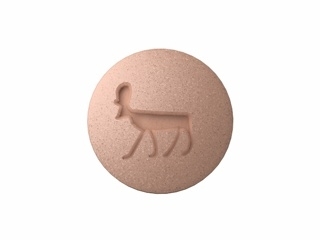Buy Amoxicillin No Prescription
Amoxicillin is a popular antibiotic used for the treatment of bacterial infections. It is prescribed for such common medical infections as bronchitis, pneumonia and some ulcers. It can work with infections around the ears, nose, throat, Gonorrhea and Chlamydia. It does not treat the cold but it will work as a penicillin-like medication to keep other types of infections from becoming worse. This medication is also prescribed for the treatment of infections from anthrax. Amoxicillin is NOT scheduled by the DEA and FDA approved to be sold with a doctor’s prescription, if you have been prescribed Amoxicillin before, the pharmacies listed offer free TeleHealth prescribing services.
Six things you must know before you buy Amoxicillin® online
Amoxicillin is a semi-synthetic antibiotic, an analog of ampicillin, with a broad spectrum of bactericidal activity against many gram-positive and gram-negative microorganisms.
Amoxicillin has caused serious and occasionally fatal hypersensitivity (anaphylactic) reactions
Amoxicillin is used to treat infections such as:
• Infections of the ear, nose, and throat
• Infections of the genitourinary tract
• Infections of the skin and skin structure
• Infections of the lower respiratory tract
• Gonorrhea, acute, in males and females
• H. pylori eradication to reduce the risk of duodenal ulcer recurrence
Do not take amoxicillin if you have a history of allergic reactions to any of the penicillins.
Amoxicillin can cause Clostridium difficile-associated diarrhea (CDAD) and may range in severity from mild diarrhea to fatal colitis.
Amoxicillin has side effects such as
• Gastrointestinal: Nausea, vomiting, diarrhea, black hairy tongue, and hemorrhagic/ pseudomembranous colitis.
• Infections and Infestations
• Hypersensitivity Reactions: Anaphylaxis
• Onset of pseudomembranous colitis symptoms, during or after antibiotic treatment
When taking Amoxicillin for a bacterial infection, you should know that although it is common to feel better early in the course of therapy, the medication should be taken exactly as directed. Skipping doses or not completing the full course of therapy may: (1) decrease the effectiveness of the immediate treatment, and (2) increase the likelihood that bacteria will develop resistance and will not be treatable by Amoxicillin or other antibacterial drugs in the future.
Important information on Amoxicillin
You will need to discuss any allergies that you have to penicillin or other types of medications. You may not be able to handle Amoxicillin depending on your allergies. You may be prescribed a lower dosage amount in some cases. You should also mention all medications that you have been actively taking. These may include chloramphenicol, probenecid and other kinds of commonly used antibiotics. Any herbal supplements or vitamins that you may be taking should be mentioned when discussing this medication with your doctor. There are some cases where you will have to adjust the doses of your other medications if you want to use them while also taking a prescription of Amoxicillin.
Your medical history is important when it comes to determining if you can safely use Amoxicillin. You should talk about any past allergies, asthma attacks, kidney disease or cases of hives that you might have had. You should also address prior cases of phenylketonuria if possible. You can take Amoxicillin in a variety of forms. You can take it as a tablet, a capsule, a soft chewable tablet or a liquid. You will have to take the particular form of this medication that you have been prescribed every eight to twelve hours as prescribed by your doctor. In other words, you will need to consume two or three doses each day. It will help to take your doses at the same times each day and to take any missed doses as soon as possible. This is only the case if you are not close (one hour) to your next scheduled dose. The dosage that you use will be recommended to you by your doctor. You will generally have to swallow a capsule or tablet whole if you use one of these options.
Finally, you should take it until you are done with your prescription. This is to ensure that your bacteria infection will go away and that the bacteria will not be able to resist Amoxicillin or other kinds of antibiotics.
What are Amoxicillin’s side effects?
- Upset stomach and heartburn
- Diarrhea
If you experience any of the following, or any other side effect not listed, while or after taking Amoxicillin contact your doctor immediately
- Skin rashes and hives
- Any symptom of liver problems including yellowing of the skin or eyes
- Any sign of an allergic reaction, especially swelling of the eyes, face, mouth, lips, tongue, or throat
- Lack of energy













